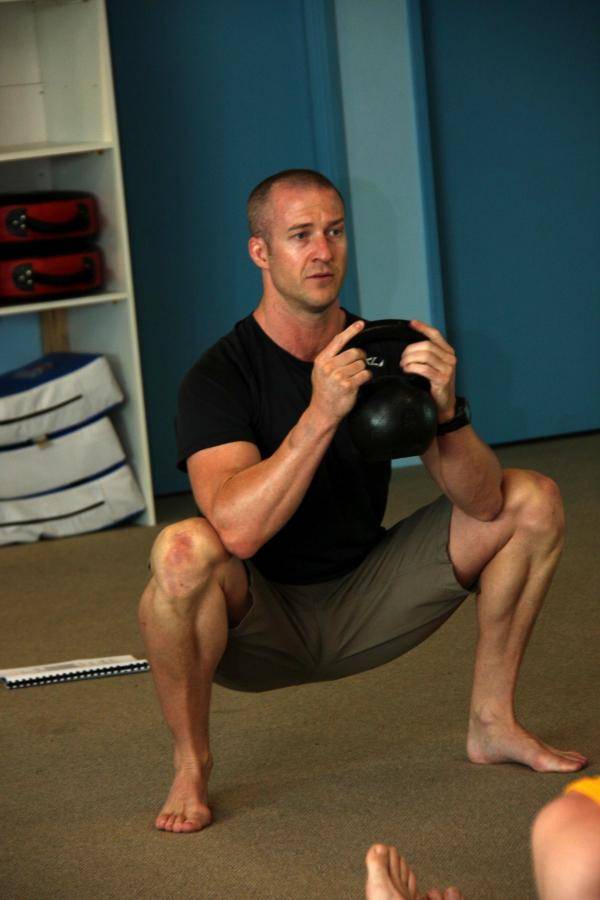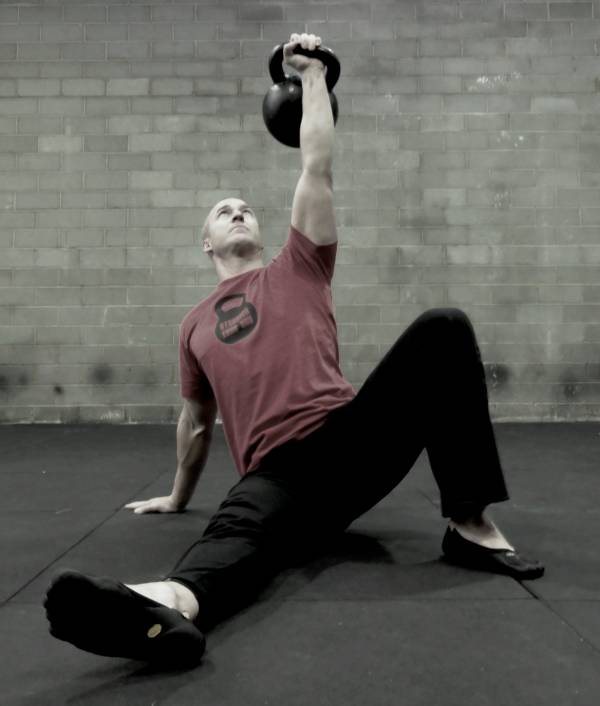Functional fitness is such a catchall term it has probably even surpassed “the core” as being the most over-hyped, but misunderstood. So first, let’s dispel a few myths about functional fitness:
1. The implement you use does not by default make an exercise functional. The implement used, whether it be a barbell, body weight, a kettlebell, or a cable stack are simply tools. Just like a hammer can’t build a house without being used the right way no tool will build functional anything unless you use it right.
2. The action performed doesn’t make it functional either. Mimicking a sporting action with weight only does one thing – it actually destroys performance. Adding weight changes the motor pattern just enough that whatever it is you were training is now different. That teaches the body a similar, but different enough pattern that performance is diminished.
The simple truth is what makes an exercise functional is that it transfers to improved performance. One of the things that really jumped out to me when I went to the RKC was how much transfer there was from RKC methodology.
But this is where the confusion starts. The transfer from training to athleticism isn’t from the kettlebell. Like with most things that are seemingly simple there are many layers of complexity involved. On a shallow level we teach people at the RKC how to instruct others in the safe use of kettlebells. But on another much deeper level what we’re doing is teaching movement and it just so happens that the kettlebell gives you enough feedback to actually get the drill right.
Looking at the FMS system one of the ways we teach the body to get the pattern right is with what’s called core assistance. If we did this using the squat as an example you’d see that the resistance of the bands are trying to force the body into flexion. In this case the abdominals brace to resist that flexion force and the result is a cleaner squat. (Because to get a really nice clean squat the abdominals need to be able to brace independently of the hip flexors which in turn are needed to pull the body into deep hip flexion at the bottom of the squat).
If we take a seemingly simple kettlebell exercise – the goblet squat – we see the exact same thing. Holding a kettlebell in front of you by the horns will act to flex the trunk and the abdominals will have to brace to resist that. This in turn frees up the hip flexors and allows a deep squat. The only difference between this squat and the FMS deep squat test is the arm position (which in the case of the test is there to check for other possible issues).
 So a goblet squat is functional because it can be used in place of the FMS core assistance drill for the deep squat. So can we stop there? The answer is of course not. The training continuum starts with developing mobility and stability, progresses to muscular endurance, and then onto strength and power. While the goblet squat can be used for strength or endurance, it’s not well suited to either and is best used to teach the pattern and develop the mobility and stability to squat seriously. Once you start to realize that all types of squats teach the body to do the same thing – reflexively brace the abdomen while the legs move independently – you see that we can use any type of squat. The only difference will be whether we choose a squat that helps our mobility, like the goblet squat, or one that helps our strength, like the back squat.
So a goblet squat is functional because it can be used in place of the FMS core assistance drill for the deep squat. So can we stop there? The answer is of course not. The training continuum starts with developing mobility and stability, progresses to muscular endurance, and then onto strength and power. While the goblet squat can be used for strength or endurance, it’s not well suited to either and is best used to teach the pattern and develop the mobility and stability to squat seriously. Once you start to realize that all types of squats teach the body to do the same thing – reflexively brace the abdomen while the legs move independently – you see that we can use any type of squat. The only difference will be whether we choose a squat that helps our mobility, like the goblet squat, or one that helps our strength, like the back squat.
So along with adding leg power and teaching bilateral force production and all the other things people tell you squats are good for, what we’ve really done is teach the body to reflexively use the core by creating proximal stability so that we can create distal mobility at the hips, ankles and knees. That skill – of disassociating the legs from the core – will transfer to anything that is upright and therefore is incredibly functional.
And this gets me back to my role teaching others how to use kettlebells. We have two kettlebell certifications that I teach, the gold-standard RKC and the one-day HKC (Hardstyle Kettlebell Certification). What always gets my attention is that people seem to think the HKC is almost insignificant compared to the RKC. In my mind, the HKC is the jab-cross of the kettlebell world. In other words, I am going to use the skills from the HKC every day and constantly, as opposed to something like the bent press that we teach at the RKC Level II, which is more like an overhand right used only when the opponent parries with their left lead. The HKC skills are the bread and butter skills we should all be using and the instructors who really stand out are the ones who have those skills nailed down the most and understand how all this functional stuff ties together.
The general format for the way the FMS works is that you go for the easiest fix first. As a general rule you move from single joint to more complex functions, fixing only the three functional patterns of squat, lunge, and hurdle step, last. The reason why is simple – an improved active straight leg raise will improve your squat. Better shoulder mobility, courtesy of some thoracic mobility will improve your squat. And so will better core activation from the trunk stability push up and rotary stability.
 Do you know what the final piece of the puzzle is for active straight leg raise? It’s the deadlift. But the deadlift is slow strength. What if we want power? Then we can do the swing. So the swing is actually one of the most useful corrections for the first thing that usually needs to be addressed during the FMS. And if we go all the way to the other end of the screen and look at the inline lunge, do you know what one of the final corrections is? It’s the get up.
Do you know what the final piece of the puzzle is for active straight leg raise? It’s the deadlift. But the deadlift is slow strength. What if we want power? Then we can do the swing. So the swing is actually one of the most useful corrections for the first thing that usually needs to be addressed during the FMS. And if we go all the way to the other end of the screen and look at the inline lunge, do you know what one of the final corrections is? It’s the get up.
What I’m getting at is this – the HKC and the FMS go together, hand-in-hand. They both appear to just be a collection of exercise progressions, but if you start to get to know them in-depth you’ll see why they can be all the training you need. From correctives and patterning to strength and power, both of these are vital elements of delivering truly functional training that has enormous carryover to the field or the ring.






